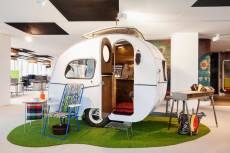November 5, 2014
More than half of workers report feeling stressed, but most keep it secret
 New research by Mind to mark today’s National Stress Awareness Day has found more than half of workers (56%) say they find work very or fairly stressful; citing excessive workloads (52%), frustration with poor management (54%), not enough support from managers (47%), threat of redundancy (27%) and unrealistic targets (45%) as key stressors. The YouGov survey of over 1,250 people in Britain found that workplace stress is impacting on other areas of people’s lives, more so than debt or financial problems (38%), health (29%) or relationships (20%). One in five (20%) said it had put a strain on their marriage or relationship with significant other, while 11 per cent had missed important events such as birthdays or weddings. Stress was also having a physical impact, with 53 per cent agreeing that it affected their sleep, 22 per cent their appetite and 27 per cent their physical health. The research also revealed that mental health at work is still a taboo. Nearly a third (30%) of respondents said they wouldn’t be able to talk openly with their line manager if they were stressed.
New research by Mind to mark today’s National Stress Awareness Day has found more than half of workers (56%) say they find work very or fairly stressful; citing excessive workloads (52%), frustration with poor management (54%), not enough support from managers (47%), threat of redundancy (27%) and unrealistic targets (45%) as key stressors. The YouGov survey of over 1,250 people in Britain found that workplace stress is impacting on other areas of people’s lives, more so than debt or financial problems (38%), health (29%) or relationships (20%). One in five (20%) said it had put a strain on their marriage or relationship with significant other, while 11 per cent had missed important events such as birthdays or weddings. Stress was also having a physical impact, with 53 per cent agreeing that it affected their sleep, 22 per cent their appetite and 27 per cent their physical health. The research also revealed that mental health at work is still a taboo. Nearly a third (30%) of respondents said they wouldn’t be able to talk openly with their line manager if they were stressed.

























November 2, 2014
The safety regulations to consider when designing a new workspace
by Tom Grey • Comment, Legal news, Property
(more…)